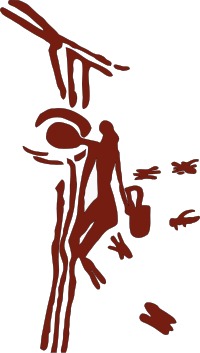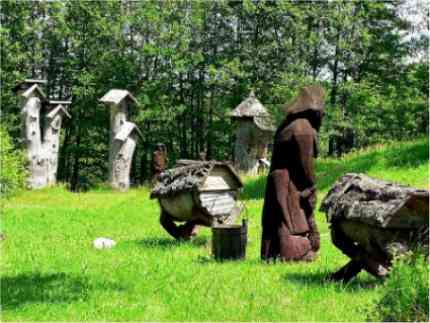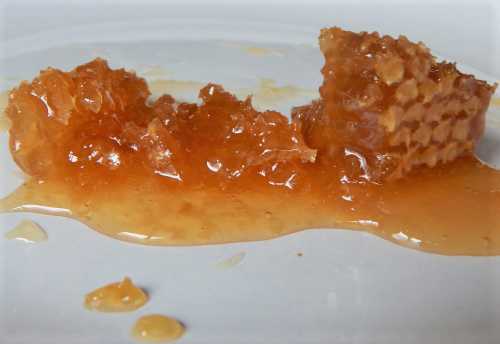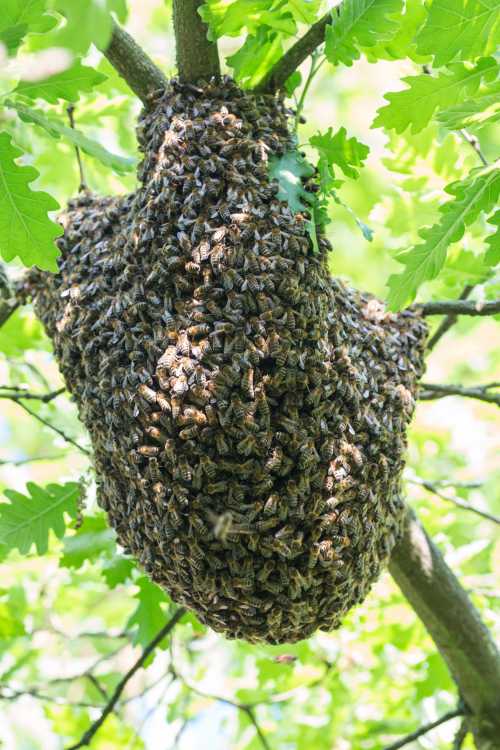History Of Beekeeping
The history of beekeeping and honey gathering go back many years. Here is a very brief summary of some of the details.
History Of Beekeeping: Ancient Times
Firstly, opinions vary about how long honey bees have been around on the planet: some sources state about 40 million years, others claim there are fossilized remains of honey bees dating back 150 million years.
The earliest records of humans eating honey (and wax), are believed to date back 10,000 years. This has been indicated in prehistoric drawings found in caves, whilst drawings found in Spain and believed to be around 7,000 years old, appear to indicate a form of beekeeping.
According to Wikipedia, the image below is a Mesolithic rock painting of a honey hunter harvesting honey and wax from a bees nest in a tree. At Cuevas de la Araña en Bicorp. (Dating around 8000 to 6000 BC):

Drawing of a painting from the caves of Cuevas de la Araña en Bicorp. (Dating around 8000 to 6000 BC)
Image courtesy of Wikipedia
The Egyptians were also practicing a form of beekeeping around 2400 - 2600 years ago during the time of the ‘Old Kingdom’.
By then, the
power of fire and smoke was known, and in Niuserre's sun temple
(Niuserra being a Pharaoh of Egypt during the 5th dynasty), beekeepers
were depicted blowing smoke into hives as they removed the honeycombs.
The honey would then be stored in earthenware jars.
According to
the book ‘Bee’ by Claire Preston, the Picts (iron age people from
Northern UK), were making honey ale between 300 – 600 BC.
Before the invention of modern hives, beekeepers used skeps ( a type of woven basket) and typically kept their skeps in a sheltered location, and possibly in a bee bole.
History Of Beekeeping: Time Line from 1500s
1538 – Spanish import the first European honey bees to South America.
1682
– George Wheler – an English clergyman and travel writer, discovers and
describes Greek hives (forerunner of modern hives with movable frames).
1700
– Again according to the book “Bee” above, written by Claire Preston,
it wasn’t until 1700 that it was understood bees gather nectar from
flowers with which honey is made.
Prior to this time, it was thought the honey was collected by the bees ready-made in the flowers!
1838 - Johann Dzierzon, a Polish apiculturist, devised the first
practical movable-comb beehive, which allowed manipulation of
individual honeycombs without destroying the structure of the hive.
Dzierzon discovered the phenomenon of parthenogenesis in bees. In
1835 Dzierzon discovered that drones are produced from unfertilized
eggs.
Dzierzon's paper, published in 1845, proposed that while queen
honey bees and female worker bees were products of fertilization, drones
were not, and that the diets of immature bees contributed to their
subsequent roles.
In 1962 a Museum of Apiculture was established at Kluczbork, Poland, in Jan Dzierżon’s honour (note, this is not related to the picture above).
 Above: Lithuania Stripeikiai Honey making Museum
Above: Lithuania Stripeikiai Honey making MuseumImage from Wikipedia
1851 – L.L. Langstroth of Philadelphia USA – the "father of American beekeeping had access to translations of Dzierzon's works, built upon the design of Dzierzon, and others (such as Francis Huber of Switzerland), and designed a completely movable frame hive. Langstroth has been credited with discovering the "bee space," although it had already been implemented by Jan Dzierżon.
However, Langstroth made many contributions to industrialized beekeeping – honey was the major sweetener in America at that time.
Above - Emile Warré, who invented the Warré Hive
1890 – William Broughton Carr, English inventor and beekeeper, invented
the WBC beehive. Learn more about the different types
of
honey bee hives.
1948 - Abbé Warré published
“Beekeeping For All” (opens new window).
In the book he outlines plans for a a top bar bee hive. Warré also
advocates far less interference with hives and bees.
Read more about
this and about
Natural Beekeeping.
Today - Beekeeping continues to evolve. In the USA, UK, and Europe, we continue to see the rise of 'natural beekeeping', otherwise known as 'bee-friendly' or 'api-centric beekeeping'. This has, in turn, resulted in the developments of different kinds of hives, intended to allow the bees to build natural combs.
Author, Professor Tom Seeley has written a book - The Lives Of Bees, in which better ways of beekeeping are discussed, learning from wild bee colonies in order to raise healthier bees.
In tandem with these developments, we are also seeing all kinds of hive, such as the flow hive.
>
>
>
>

